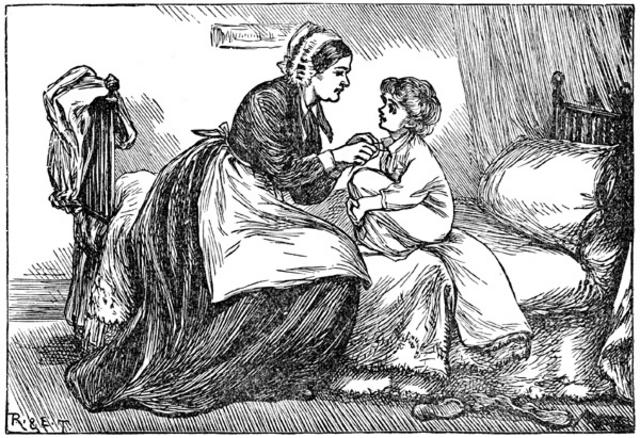Welcome to Revolutionary Stories, created by the Freedom’s Way National Heritage Area. Each story explores the enduring legacies of the American Revolution in the Freedom’s Way National Heritage Area, providing the opportunity to visit the places and meet the people that made and continue to make history in the region.
Today we’re at the Isaac Davis Home Site on Hayward Road in Acton, Massachusetts. While the original farmhouse in which Isaac and his wife, Hannah, raised their family was demolished in the early 1800s, a granite stone dedicated in 1895 on the first observance of Patriots’ Day marks its former location. Sited next to a flagpole on a small, triangular plot of land near the road, its inscription reads:
DAVIS HOME
THIS FARM WAS THE HOME
OF CAPT. ISAAC DAVIS
WHO WAS KILLED IN BATTLE
BY THE BRITISH AT
THE OLD NORTH BRIDGE
IN CONCORD APRIL 19, TH.
1775.
***
Hannah Brown was born in Cambridge, just outside of Boston, on March 26, 1746. At the age of eighteen, she wed Isaac Davis, a year her senior, and the two began building their life together in Isaac’s hometown of Acton. Early the following year, Hannah gave birth to their first child, a son named after his father. The couple welcomed five more children into the family—sadly, two did not survive infancy. Hannah raised the children and managed the home, and Isaac earned a living as a farmer and blacksmith, all the while tensions with the British Crown were building throughout the colony.
Isaac, who had been elected captain of the Acton Minute Company in November 1774, forged bayonets and fashioned cartridge boxes for use by his fellow minute men. These they used as they practiced military maneuvers in the Davis’s backyard twice a week, preparing to defend themselves, if necessary, from the impending British threat.
In the early morning of April 19, 1775, Hannah and Isaac were awakened at their home to an alarm rider calling, “to arms, to arms, the regulars march on Concord.” The situation was dire: the British Redcoats were marching on Concord to seize military stores held by the colonial militia. Meanwhile, their four children, Isaac, age 10, Hannah 7, Ephraim 5 and Mary 15 months, lay sick in bed with scarlet fever.
From the stoop of her front door that morning, Hannah watched as the minute men gathered. When enough men arrived, they formed ranks under Isaac’s command and began their march, in a column two abreast, to neighboring Concord seven miles away.
Despite his ardor for the Revolutionary cause, Isaac’s conflicted feelings about leaving his family that morning were clear. According to Hannah’s 1835 deposition, “As he led the company from the house, he turned himself round and seemed to have something to communicate. ‘Take good care of the children’ he said and was soon out of sight.” It was the last time Hannah saw her husband alive—Captain Isaac Davis was mortally wounded that morning at the North Bridge, making him the first colonial officer to die in the American Revolution.
Later that day Isaac’s body was returned home, the hero of the Concord Fight. Hannah, alone in her grief, was now the first Revolutionary War widow. Three men from Acton had been killed that day, including Abner Hosmer and James Hayward, and according to Hannah, their bodies, “were brought to the house where the funeral of the three was attended together.”
America was now in the midst of war. During those difficult years, Hannah continued raising her children, all four of which survived their bouts with scarlet fever, and remarried local widower and Revolutionary War veteran, Samuel Jones, Jr., in 1782. Together they had three children: Samuel, James, and Betsy.
Samuel’s father and brother owned and operated Jones Tavern in South Acton, which still stands today and is open to the public thanks to the preservation efforts of a local non-profit, Iron Work Farm. A businessman himself, Samuel left for the new country opening along the Mississippi River delta after the war and soon sent for Hannah and the children to join him. Hannah loaded a wagon and arrived in New Orleans without mishap. The couple settled in Natchez, Mississippi where in 1796, Samuel succumbed to yellow fever.
Hannah moved the family back to Acton where she married widower and Revolutionary War veteran Francis Leighton of Westford in 1802. Following Leighton’s death four years later, she remained a widow for the rest of her life.
Hannah’s son, Samuel, a successful attorney, was busy developing Acton Centre at the turn of the century and invited his widowed mother to live with him on Wood Lane. There she operated a dame school for neighborhood children for a number of years. Hannah struggled financially and in 1818 applied for a pension from the federal government only to be denied. It was not until 1840 when Hannah was in her 90s and following an impassioned plea from Senator Daniel Webster recalling the valor of her husband, the first American officer to die in service to America, that her war widow’s pension was finally approved.
Her military pension petition from 1840 records her emotions on that morning:
“As he was about to place himself at the head of the Company, which, at the beat of the drum, had formed at the door, he turned on it to take leave of his wife. “Take good care of the children” was all he could say. She heard his voice no more, except in the firm tones of command, as he led his company from the door.
Hannah died in 1841 with the thanks of a grateful nation and is buried at Woodlawn Cemetery in Acton.


